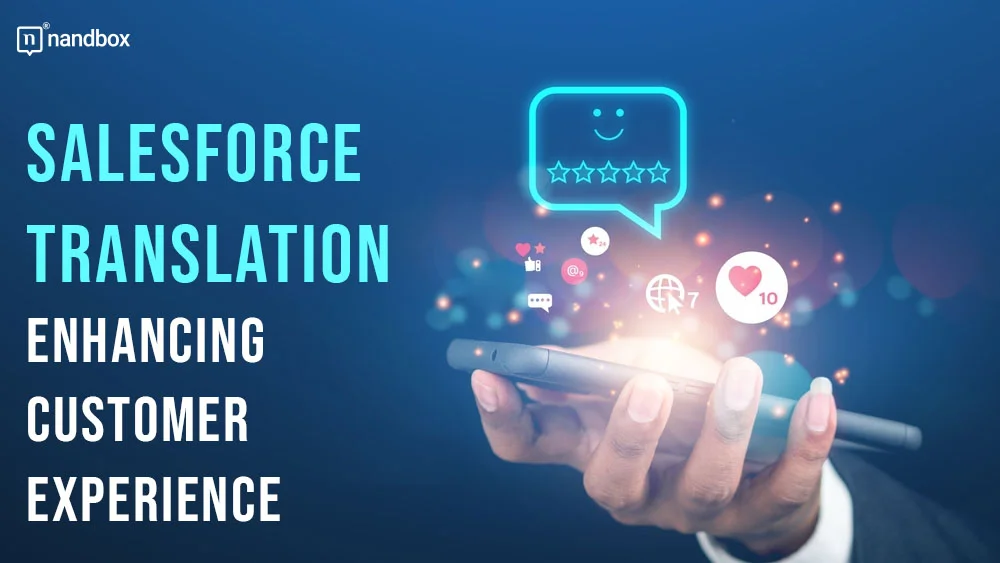In an increasingly global marketplace, communicating effectively with customers in their native language is paramount. Businesses leveraging CRM solutions, particularly Salesforce, are uniquely positioned to bridge language barriers and enhance customer interactions through advanced translation features. By integrating translation capabilities within their Salesforce CRM, your company can provide a more personalized and accessible service, catering to a diverse customer base.
Read on to learn how Salesforce translation can enhance your customer experience.
Enhancing Customer Experience With Salesforce Translation
One highly effective method to leverage language translation capabilities within Salesforce involves utilizing integrated solutions. These tools are intricately woven into the Salesforce platform, allowing seamless translation services.
Such integration empowers your business to communicate effortlessly with customers across the globe in their native languages, ensuring that every message, instruction, or response is clear and precise. This capability is crucial for handling support cases and driving sales initiatives and crafting impactful marketing campaigns. By facilitating multilingual interactions, your company can enhance customer engagement and satisfaction, fostering a more inclusive and accessible customer experience.
Therefore, if you want to learn more about these integrated solutions, you can visit reliable online resources to gain more insights. You can also open your favorite search engine and use keywords like “Salesforce translate” to find innovative options.
Key Benefits Of Salesforce Translation In Customer Service

Salesforce translation brings significant advantages to global business operations. These include:
Improved Customer Service
Salesforce translation tools empower customer service representatives to handle and respond to support requests in many languages effectively. This multilingual support is crucial for providing personalized assistance, as it allows customers to communicate in their native tongue, which reduces misunderstandings and enhances the clarity of interactions. Such personalized communication improves response and resolution times and significantly boosts customer satisfaction.
Also, when customers feel understood and valued in their language, it strengthens their trust and connection with the brand. This deepened relationship is vital for building customer loyalty and encouraging repeat business. Ultimately playing a key role in your company’s long-term success and reputation.
Streamlined Global Communication
Operating globally presents numerous challenges, notably maintaining clear and consistent communication across various languages and cultural contexts. Salesforce translation tools can address these challenges by removing language barriers, which facilitates flawless communication within all business sectors. This capability is essential for coordinating efforts among international teams and ensuring that all departments, from human resources to customer service, operate in harmony.
Furthermore, engaging with customers and stakeholders worldwide becomes more manageable as translation tools can help convey messages accurately and appropriately. This level of communication efficiency enhances operational effectiveness and supports the company’s global expansion strategies.
Enhanced Marketing Outreach
Utilizing Salesforce translation for marketing initiatives allows teams to customize their outreach efforts to cater to diverse linguistic demographics. This adaptation involves creating culturally and linguistically tailored content that resonates more profoundly with each segment of the target audience.
By delivering marketing messages in the preferred languages of different customer groups, your business can significantly enhance the relevance and appeal of your campaigns. This approach boosts customer engagement and increases the overall effectiveness of marketing strategies. The ability to connect with customers in their native language enriches the customer experience, fosters greater brand loyalty, and drives higher conversion rates, positioning your company as a sensitive and inclusive player in the global market.
Implementation Strategies For Salesforce Translation
Implementing Salesforce translation effectively requires strategic planning and precise execution. Below are the key strategies to integrate translation capabilities into Salesforce:
Choose The Right Translation Tool
When integrating a translation tool into Salesforce, it’s crucial to select a solution that aligns perfectly with your company’s specific needs. Some factors to consider include the range of languages supported, how seamlessly the tool integrates with existing Salesforce setups, the accuracy of the translations it provides, and the overall cost.
A suitable tool must address your company’s immediate requirements while offering scalability to accommodate future linguistic and business growth. It should also possess robust support for API integrations, allowing for smooth updates and compatibility with other systems. By choosing wisely, your business can ensure that its diverse customer needs are met and that the tool can evolve with the company’s expansion, which avoids the need for frequent replacements and minimizes disruption in customer service operations.
Invest In Training And Support
Successful implementation of a new Salesforce translation tool is heavily dependent on comprehensive training and robust support structures. Initially, thorough training sessions should be organized to acquaint employees with the tool’s features and functionalities. This training should be tailored to different user levels within the organization. Ensuring that everyone from tech teams to customer service representatives understands how to leverage the tool effectively.
Beyond initial training, continuous support must be provided to address any operational hitches and to assist with updates or troubleshooting. Regular feedback loops with users can help identify areas for improvement, ensuring the tool continues to meet the organization’s evolving needs. Ultimately, adequate training and ongoing support are critical in maximizing the tool’s utility and ensuring seamless day-to-day operations. To achieve this, you can hire Salesforce experts with the help of talent solution providers like Smoothstack.
Ensure Quality Control And Proper Management
Maintaining the quality of translations within Salesforce is essential for ensuring communication remains clear and professional across all customer interactions. Implementing stringent quality control measures is therefore crucial. Regular audits of translation memories and glossaries help in keeping translations accurate and consistent over time. Updates should be managed carefully to incorporate new terminology and usage trends without disrupting ongoing operations.
Additionally, involving native speakers in the review process can provide an added layer of verification, particularly for nuanced or culturally sensitive content. These steps can help safeguard the quality of the translations provided, ensuring they meet high standards of accuracy and relevancy. Consequently, you can uphold your company’s reputation and ensure customer trust.
Conclusion
Incorporating translation services into Salesforce can significantly enhance the customer experience by facilitating better communication, fostering deeper connections, and ensuring that businesses can effectively serve a global customer base. By strategically implementing these tools. Your company can help improve your customer interactions and gain a competitive edge in the global market. With careful planning and execution, the benefits of Salesforce translation can be fully realized, leading to improved customer satisfaction and business growth.




